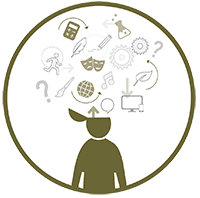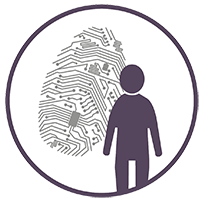
Critical thinking in the dramatic arts consists of analyzing, synthesizing, interpreting, and evaluating the dramatic arts experience or work through observation, reflection, and reasoning in order to make informed judgments and choices to guide one’s decisions and actions.

Creativity in dramatic arts is the ability to generate, imagine, develop, and transform ideas in order to invent, innovate, find solutions, or create an artistic work.

Citizenship in dramatic arts is linked to the ability to engage with cultural, social, political, environmental, and economic issues through artistic practices to facilitate a more humanitarian and sustainable world.

Connection to self in dramatic arts includes the development of one’s identity, physical and spiritual well-being, resilience, autonomy, confidence, and perseverance. Practising dramatic arts helps learners transform and develop, and it increases their self-esteem, motivation, and sense of belonging.

Collaboration in the dramatic arts is about learning from each other and working together toward a common goal to co-construct meaning using artistic language and processes related to dramatic arts.

Communication in dramatic arts is based on interaction with others or with a dance, enabling one to express or interpret messages, ideas, or emotions, and to respond to them using artistic languages and processes.
Making in Dramatic Arts
The learner develops language and practices for making drama/theatre using tools (body, voice, mind), techniques, elements, and forms associated with the dramatic arts. The dramatic arts embody and communicate ideas, feelings, and meaning through cognitive, physical, affective, and intuitive modes. The development of language and practices for making drama/theatre illuminates, deepens, and broadens human experience through interactions, relationships, and individual and collective contributions.
Connecting in Dramatic Arts
The learner develops understandings about the significance, influence, impact, and role of the dramatic arts by making connections to the contexts of various times, places, social groups, and cultures. Engaging with dramatic arts practices, forms, styles, traditions, and artists enables learners to understand the world around them and the perspectives of others. “Connecting” in the dramatic arts invites the learner to question the past, to challenge the present, and to shape the future.
Creating in Dramatic Arts
The learner engages in the creative process by generating, developing, and communicating ideas in the creation of dramatic art. The creative process in drama/theatre provides opportunities for the learner to imagine possibilities, communicate complex ideas and emotions in unique and powerful ways, express the intangible, and explore identities. Through the creative process, learners explore multiple and sometimes unexpected ways to solve problems and find solutions. The divergent, open-ended creative thinking needed for the creative process is essential for all learning in today’s world.
Responding in Dramatic Arts
The learner uses critical reflection to inform drama/theatre learning by responding, observing, describing, analyzing, and interpreting dramatic arts experiences. The process of critical reflection in dramatic arts enables learners to recognize different perspectives, challenge and construct ideas, beliefs, and values, and apply new understandings to their learning. This process informs the learner’s identity and agency and is necessary for transformative learning.